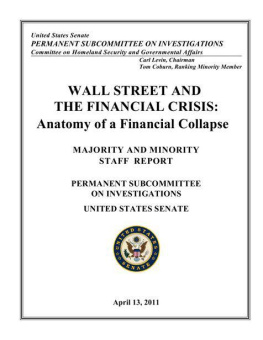
THE REFINANCING
GUIDE
Understanding and adapting to the changing liquidity in the European LBO market
Edited by
Romain Cattet, Marlborough Partners
Published in November 2013 by
PEI
6th Floor
140 London Wall
London EC2Y 5DN
United Kingdom
Telephone: +44 (0)20 7566 5444
www.peimedia.com
2013 PEI
ISBN 978-1-908783-18-9
eISBN 978-1-908783-66-0
This publication is not included in the CLA Licence so you must not copy any portion of it without the permission of the publisher.
All rights reserved. No parts of this publication may be reproduced, stored in a retrieval system or transmitted in any form or by any means including electronic, mechanical, photocopy, recording or otherwise, without written permission of the publisher.
Disclaimer: This publication contains general information only and the contributors are not, by means of this publication, rendering accounting, business, financial, investment, legal, tax, or other professional advice or services. This publication is not a substitute for such professional advice or services, nor should it be used as a basis for any decision or action that may affect your business. Before making any decision or taking any action that may affect your business, you should consult a qualified professional adviser. Neither the contributors, their firms, its affiliates, nor related entities shall be responsible for any loss sustained by any person who relies on this publication.
The views and opinions expressed in the book are solely those of the authors and need not reflect those of their employing institutions.
Although every reasonable effort has been made to ensure the accuracy of this publication, the publisher accepts no responsibility for any errors or omissions within this publication or for any expense or other loss alleged to have arisen in any way in connection with a readers use of this publication.
PEI editors: Philip Borel and Helen Lewer
Production editor: Julie Foster
Printed in the UK by: Hobbs the Printers (www.hobbs.uk.com)
Contents
What are private debt funds? |
|
Figures and tables
Figures
Tables
About the editor
Romain Cattet is a partner at Marlborough Partners. Romain began his career at Arthur Andersen in Paris, having graduated from the EDHEC Graduate School of Management, majoring in Finance. He then joined the transaction services practice of PwC at a time when private equity transactions were taking off in Europe. After three years, in 2005, he joined Blenheim Advisors, a newly-established independent leverage advisory firm in London, which rapidly became the independent market leader in the sourcing and structuring of debt for private equity firms and their portfolio companies. In 2007, Blenheim Advisors was acquired by Houlihan Lokey where Romains focus over the next few years was predominantly on debt restructuring, ranging from covenant resets to situations with significantly impaired debt, some with over 250 lenders. In 2009, Romain was recruited by Alix Partners to develop the financial restructuring practice. When the principals of the original Blenheim team came together again towards the end of 2010, Romain joined them as a founding partner of Marlborough Partners.
Marlborough Partners is now the leading independent leverage debt advisory firm in Europe with offices in London and Frankfurt. The team has experience of every type of financing, ranging from small clubs of local banks to large capital market loans and bond transactions. Romain works on deals across Western Europe and is also responsible for deal origination in France where he maintains an extensive network among private equity firms, banks, private lenders and law firms. His recent transactions include the refinancing of thetrainline.com for Exponent, the refinancing of Tokheim for Motion Equity Partners and the financing for the acquisition of Oberthur by Advent International.

Introduction
When presented with the opportunity to cooperate with PEI on a thematic book about refinancing of private equity portfolio companies, the Marlborough team took relatively little time to accept. We believed that such a book was and would be particularly relevant given the extraordinary times the European leverage financing market was (and is still) going through.
Simplistically, five years ago, leveraged buyouts (LBOs) financings were arranged by one or several commercial and investment banks and then (relatively easily) sold on to other banks or investment vehicles named CLOs. Also, they were structured as loans and their terms and conditions were rather standard.
Then the financial crisis between 2008 and 2010 shook up everything. Banks started to restrict the use of their balance sheet, in part due to the forced reduction of the loan book to absorb heavy losses, but also due to new regulatory frameworks, in particular Basel III. This translated into the end of underwriting in the mid-market deals (this still hasnt recovered) and very cautious behaviour for large cap transactions. This crisis also killed the CLO market. Given the unanticipated high default rates incurred in 2009, the product became very unattractive for institutional investors and, while we have experienced some positive activity in this market so far in 2013, amounts raised over the last five years have been close to nil.
This reduction in traditional sources of liquidity is unfortunately unravelling in a period when a significant amount of debt contracted by private equity owned companies is coming to maturity (the commonly called Refinancing Wall). In theory, a perfect storm should be imminent. Thankfully, this is not as dramatic or simple. We thought it would be appropriate to open this book with some analyses on the matter (see Chapter 1).
While a number of mid-market companies will keep restructuring and liability management advisers busy for a few years, new liquidity is coming fast to the European market to compensate for the shortfall and the old one is also adapting. Logically, a large section of the book is dedicated to this new landscape and, in particular, to public bonds and private debt, and the technical issues related to these relatively new structures.
As a result of all the above, sponsors and their portfolio companies are today operating in a European debt market which we qualify as complex, volatile and fragmented. Admittedly, this new environment is hard to navigate and we hope that this book will give readers some relevant insight as well as useful information in the context of their role on forthcoming debt refinancings.
From our perspective at Marlborough Partners, having advised on LBO financings for the last ten years, we have not only witnessed all of these changes, but we have also been helping to shape some of the features of the European market. Our team was first set-up to replicate best practices developed on large cap transactions on to mid-cap deals and we indeed pushed terms and conditions quite far at the time. Our range of services then extended to sell-side and secondary market products. We were fortunate to be part of the leading restructuring firm during the financial crisis. Frankly, complex and large LBO debt restructurings had never been executed in Europe at the time and we all learned a lot from it. The recovery happened quicker than many expected and we became the substitute to arrangers in the mid-market, sometimes clubbing ten banks together to finalise a transaction. We also started to look for liquidity outside the conventional paths and introduced US-style unitranche financing to Europe in early 2011. At the time of writing this introduction, we are advising on deals in four jurisdictions, with size ranging from 30 million to 1 billion, on the sell-side and the buy-side, in the context of new transactions, easy refinancings and complex restructuring. We believe that this range of deals clearly reflect how our role has evolved over time and also demonstrate that there is a recognised value of being a specialist. Many private equity funds understood it and set-up dedicated internal debt advisory teams. Two of the most experienced internal specialists have contributed to this book.
Next page









